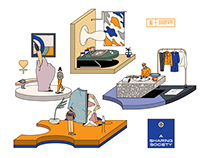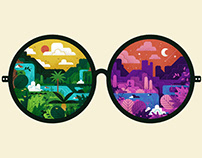http://www.Behance.net is an online platform used to showcase creative work and allow designers to become known. Behance gives designers the opportunity to post their work in one place so it can be broadcast widely and efficiently. This allows companies to explore the work and access talent on a global scale. This is done through profiles comprised of “Projects”. A Project is compiled of images, videos, and other digital content. Every Project has a specific URL that can be shared all over the internet and leads back to the site. You can also follow the profile of other members of Behance and visa versa. When you follow someone, their uploaded content and other interactions appear in your Activity Feed where new work is being posted and updated constantly. Behance.net is free to use however there is an optional paid service called “Prosite”. Prosite allows you to build a customized portfolio and costs $99 per year. Although, you’re an Adobe Creative Cloud member, it’s part of your membership!














